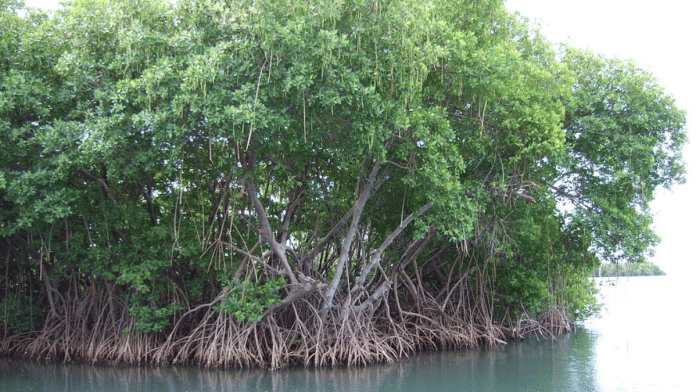New Delhi: High air pollution levels pose a significant threat to the Sundarbans, a crucial mangrove ecosystem in India’s West Bengal and Bangladesh that protects the region from extreme weather, a new study has found.
The study, ‘Acidity and oxidative potential of atmospheric aerosols for a remote mangrove ecosystem during the advection of anthropogenic plumes’, highlighted how pollutants, especially black carbon or soot particles, not only from urban activities in Kolkata but from the entire Indo-Gangetic Plains (IGP) was significantly impacting the Sundarbans.
“Pollutants transported from the IGP as well as localised pollutants like biomass burning and emissions from local boat services made the particulate matter (PM) suspended over Sundarbans highly acidic and rich in trace metals,” the study, published in ScienceDirect, reads.
Old motors in local boats being operated in West Bengal were identified as a major source of heavy toxic metals in the air, according to researchers from IIT-Kanpur and Bose Institute, Kolkata.
Professor Abhijit Chatterjee, one of the authors, explained that the acidic components of PM 2.5 (ultrafine particulate matter with diameter less than 2.5 micrometer) pollutants favoured the formation of reactive oxygenated species (ROS).
ROS is a type of unstable molecule that contains oxygen that easily reacts with other molecules in a cell. The buildup of ROS can damage a living cell and also has the potential of causing cell death.
“In a coastal ecosystem, the mangroves usually form a series of antioxidants and reduce ROS and toxic stresses,” Chatterjee said. He added, prolonged and long-term deposition of heavy metals, however, can impact their resistance, causing cellular damage of mangroves.
Chatterjee also pointed out that high ROS can also harm aquatic animals by creating toxic conditions.
The mangroves of Sundarbans play a vital role in climate change mitigation by absorbing greenhouse gases. According to experts, its potential to absorb atmospheric carbons and other climate warming greenhouse gases is more than the Amazon rainforest.
Its role in maintaining a balance between the mangroves and the Bay of Bengal has also been noted in multiple climate studies in the past. Experts note that destruction of this ecosystem will expose the region to natural disasters.
Also Read: How Punjab farmers sacrificed high income for a big cause—they gave up Pusa-44 this year
Recommendations for conservation
The researchers have listed a 10-point recommendation to stop the degradation of Sundarbans.
The study has urged government agencies to adopt more sustainable energy sources like solar and wind energy in the nearby areas. Promotion of electric vehicles in the area also featured in the list of recommendations prepared by IIT-Kanpur researchers.
They have also asked for more stringent measures like, controlling tourism, banning diesel generator sets, subsidising LPG to reduce reliance on more polluting traditional cooking methods, closing polluting factories, stopping toxic shipments, and strengthening coastal regulations.
Abhinandan Ghosh, the lead author of the study, said that several studies have highlighted the low per capita income of Sundarbans as compared to people from other urban and semi-urban parts of the country. This slows down their shift from traditional cooking methods to cleaner fuels.
“Large use of kerosene lamps for domestic lighting is also very common in Sundarbans. It would also be worth mentioning that the only medium of inter-island transport in the Sundarbans delta is diesel-driven boats and vessels, most of which run on low-efficiency engines,” Ghosh said.
Experts said that these unique challenges in the region makes it more challenging to frame policies to combat pollution in the region, which has nearly 4.5 million inhabitants.
(Edited by Tony Rai)
Also Read: 5,710 forest fires in April alone — Uttarakhand’s burning problem & what’s behind it






